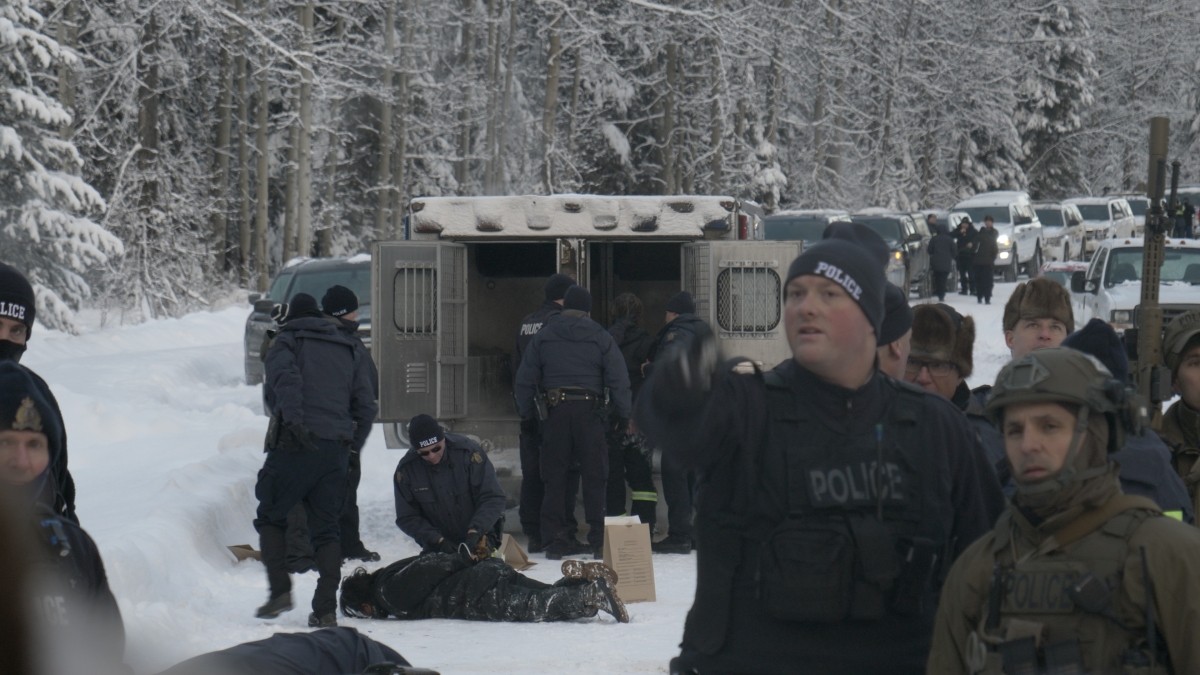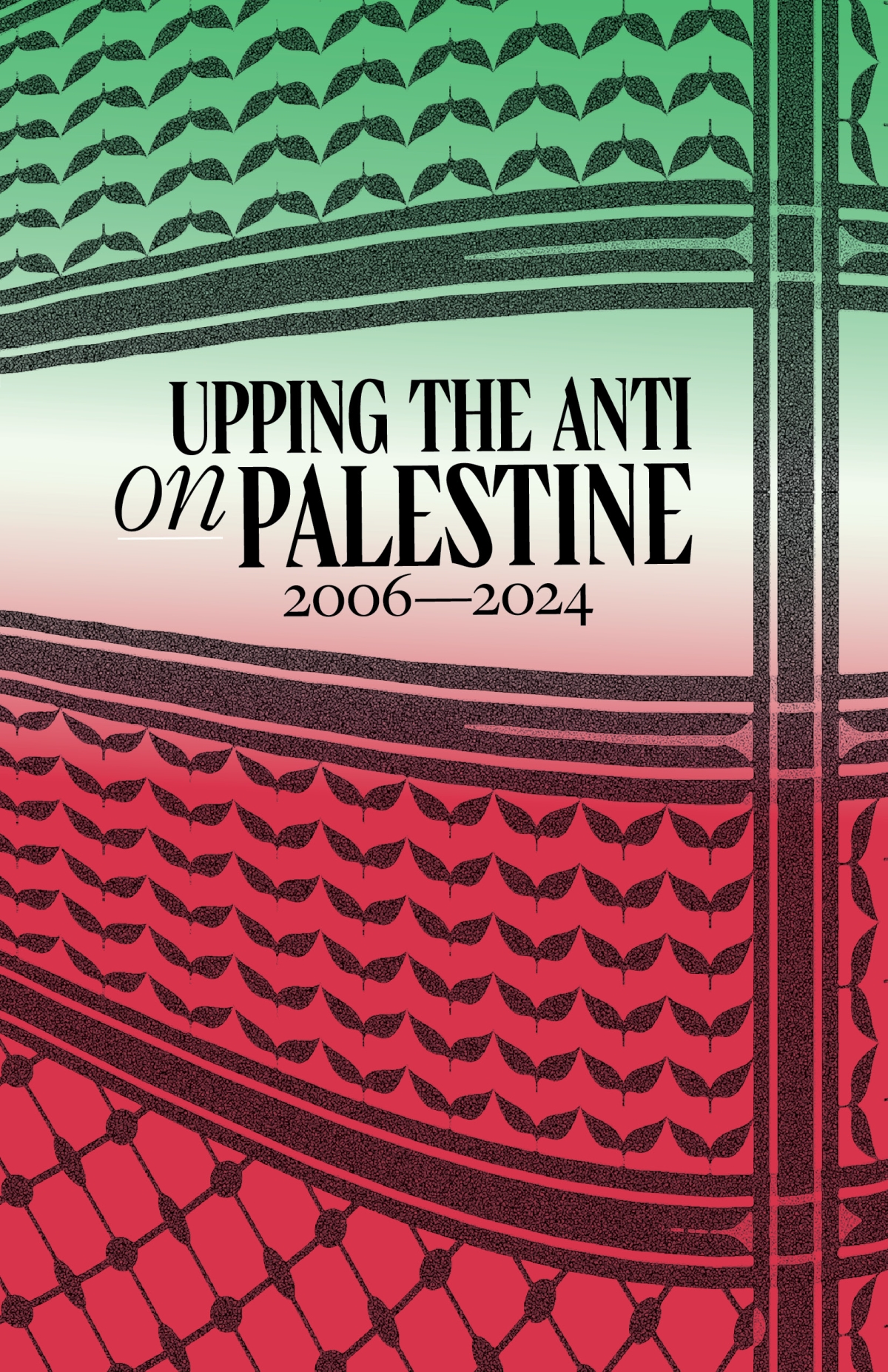Unist’ot’en camp: Resistance, Solidarity and the State!
_1.jpg)
Photo by Michael Toledano
Almost ten years ago major pipeline companies including Trans-Canada, Enbridge, and Pacific Trails, proposed construction of several pipelines through Wet’suwet’en territories in what is called British Columbia. Freda Huson, with the support of her community, started the Unist’ot’en camp to stop the trespassing by these pipeline companies on their territory. A check-point was erected, followed by a cabin built in the pathway of the proposed pipelines. Previous assaults on the territory by resource extraction companies has already affected the Wet’suwet’en people by destroying the habitat of the staple foods of these communities such as the salmon and the caribou. While the territory is relatively intact, the impacts of colonialism on the community had created disconnection from the land and the well-known struggles faced by many Indigenous people across Turtle Island were rampant.

Photo by: Michael Toledano
Therefore the camp took on a significant responsibility beyond just stopping the construction and proposals of several pipelines including Enbridge’s Northern Gateway pipeline, and Coastal Gaslink pipeline in Northern BC but also engaging in process of healing and resistance too. 1
W.E.B. Du Bois, one of the most important Black scholars who dedicated his life to the emancipation of Black people in America, emphasised the importance of history in resistance. “To lose one’s history” he wrote, “is to lose one’s self-understanding and with it the roots for pride.” 2
The Unist’ot’en Camp came to existence because of the history of colonial extractive violence that goes back to 1952 in the region, including hydroelectric projects, mining, logging, and agriculture and grazing leases that all involved land grabbing by settlers. The ongoing primitive accumulation of land and resources on Indigenous territories is similar to global neo-liberal economic strategies in some parts of the global south. In many areas such as latin America, primitive accumulation of the land and resources through mining and industrial farming could happen only by destroying the traditional ways of life in which connect people, communities and tribes to the land. According to John Smith:
The accelerated spread of capitalist social relations among Southern nations during the neoliberal era has been far more effective in dissolving traditional economies and ties to the land than in absorbing into wage labor those made destitute by this process. 3
Legally speaking, the Canadian government and RCMP have no jurisdictions on unceded Wet’suwet’en land. 4 Yet, on Jan 7th 2019, RCMP tactical unit attacked the Gidumt’en checkpoint, a checkpoint established on Wet’suwet’en land by a neighboring nation yet which blocked the only road in toward the Unist’ot’en Camp. The RCMP was attempting to clear the path for Coastal GasLink workers to start construction on a “Man Camp” which will provide housing for the Coastal Gaslink employees in preparation for pipeline construction. The attack was brutal: police in full army gear attacked the Gidumt’en checkpoint, tearing apart wooden barricades and arresting 14 people including one elder! For days they did not even let media reporters go to the zone, contravening freedom of the press. But despite this, no major Canadian outlets or international human rights groups objected in a serious manner. They certainly didn’t express concerns about “democracy” and “press freedom” being under attack in the same way that similar incidents in other gas and oil exporting countries (such as in Venezeula and the middle east) are covered.

Photo by: Michael Toledano
The Canadian government showed its colonial face by sending in armed forces to protect the private companies whose operations threaten the environment, and land and the communities who are living there. This is not the first time that Canadian government has sent tactical units to suppress Indigenous resistance. The cases of the Gustafsen Lake stand-off and the Oka crisis, as well as many other attacks on the communities resisting the colonialism and resource extraction industries are part of the ongoing history of this country. The violence comes in different forms; besides these forms of direct subjective violence, there is a long history of lies and tricks that RCMP, Government, and industry tell the communities to make their projects happen. We see the same pattern at Unist’ot’en case: community members have been told that they can access their trap lines and territories, but then are faced with exclusion zones, harassment, and are denied access to their trap lines. The same thing has happened in other cases of Indigenous resistance.
For example in the case of the MuskratFalls Hydroelectric dam in Newfoundland and Labrador, land access to the area surrounding the former falls was promised to Indigenous communities, but in practice was denied.
One Innu elder, Elizabeth Penashue, has taken her family and others to the traditional lands of the Innu(Penashue 2013), giving her children and grandchildren time on the land to learn and experience traditional ways of being and doing… She was denied access, despite assurances from the NL government that the Indigenous peoples would have access to their traditional sacred lands. 5
Besides the environmental destruction that comes with pipelines, Coastal Gaslink (CGL) wants to build 14 man camps in the territory, which will have a substantial socio-economic effects on the Indigenous communities. The 9a man camp by Morice River, along with 13 other proposed sites, are planned to provide housing for 500 to 800 workers each! 6 These camps usually do not have adequate infrastructure, and therefore the camps themselves become a burden for the communities and small cities around them. Many studies and first hand accounts show that these man camps lead to higher rates of sexual assault and violence 7 as well as contributing to higher food and housing prices, while making navigation of health and social services for the community members harder.
All of these issues bring us back to the question of the state, environmental activism and Indigenous solidarity. How do we resist a capitalist state that is actively working against communities and the environment to protect the profit of private companies? Indigenous sovereignty stands in opposition to the colonial capitalist state and supporting these efforts is crucial for all anti-capitalist environmentalists. To put it in global context, environmental activism that is in solidarity with Indigenous resistance also stands against all the fake measures of global economic benefit. Such measures include production but ignores the true costs such as environmental destruction, community devastation, and the hyper-exploitation of workers. If these costs were included they would radically alter such development equations, and all the apparently positive outcomes would turn negative. 8
On the other hand, if environmental activism is separated from Indigenous solidarity, anti-racism, and feminist resistance it can easily fall into eco-fascism – much like the politics identified in the manifesto of the Christchurch Mosques shooter! 9 Therefor being just pro-green energy, or an environmentalist is not good enough; it actually can go the extreme wrong way! Solidarity of environmentalists with Indigenous resistance, anti-racist resistance of people of color and immigrants and feminist resistance of queer communities and women are essential and inseparable! Otherwise, you’re standing on the wrong side of history!

